




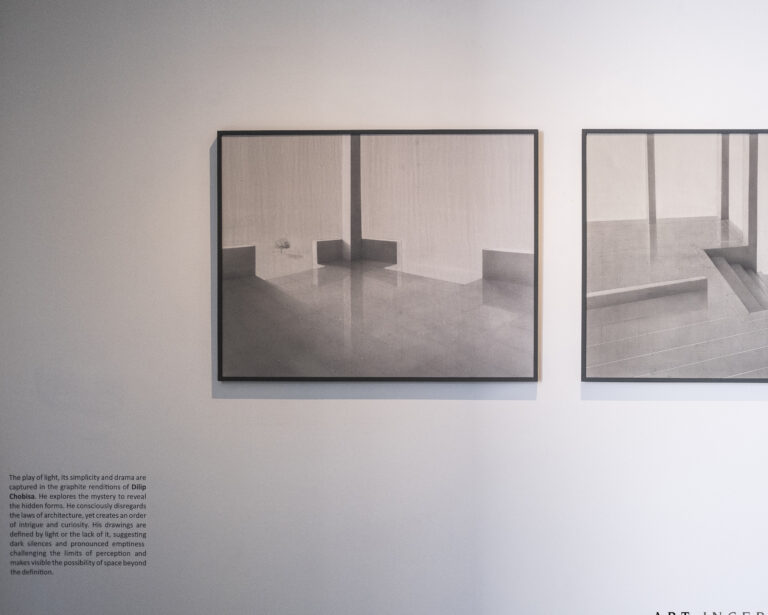

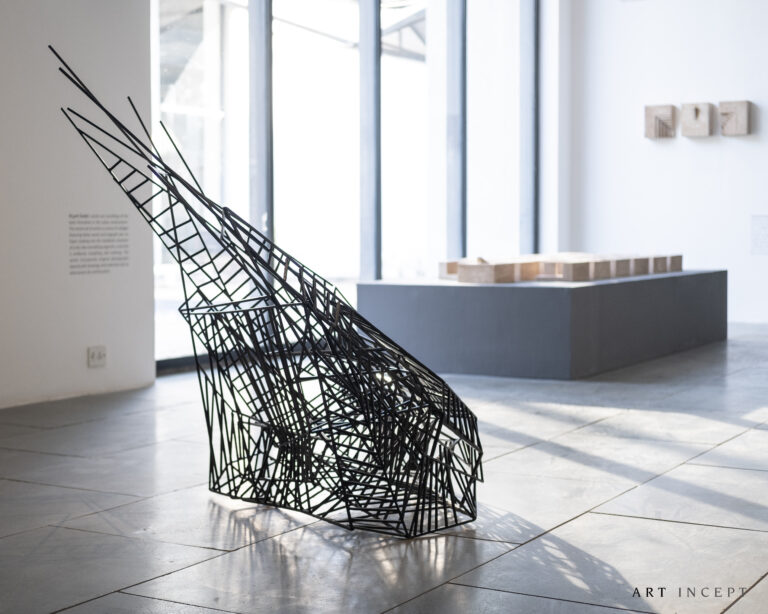


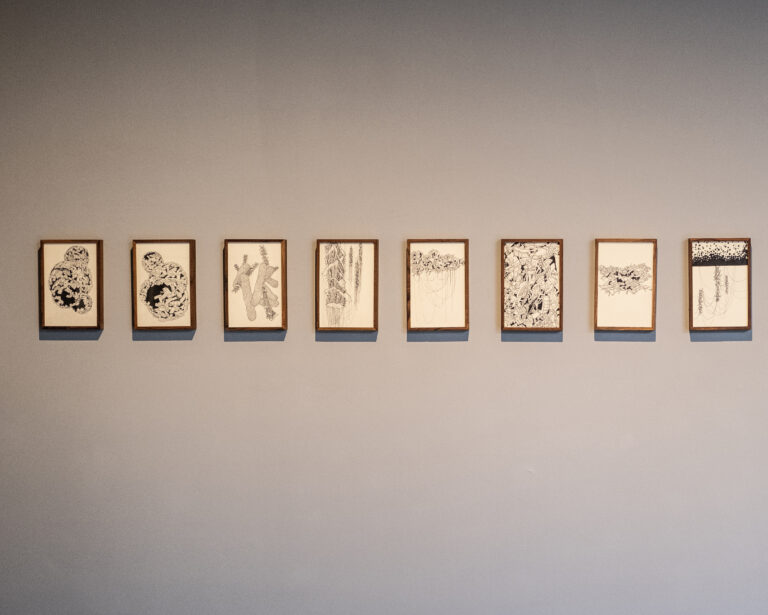
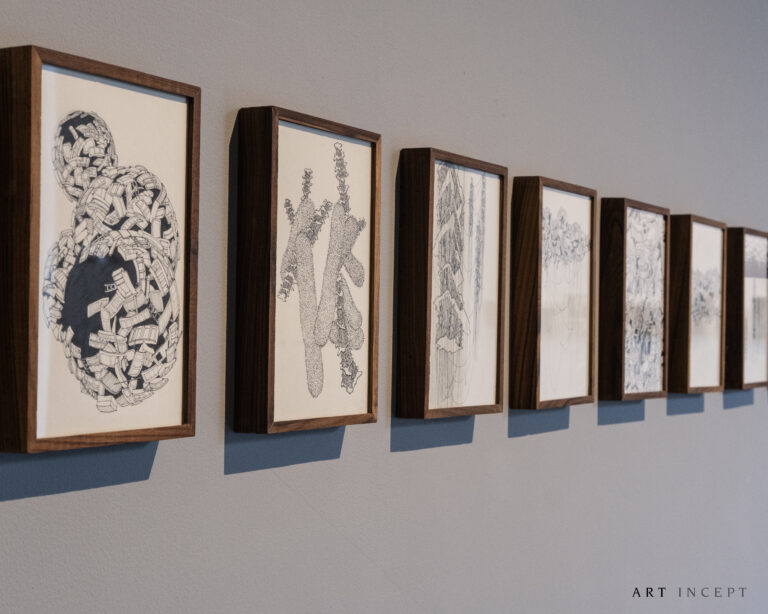




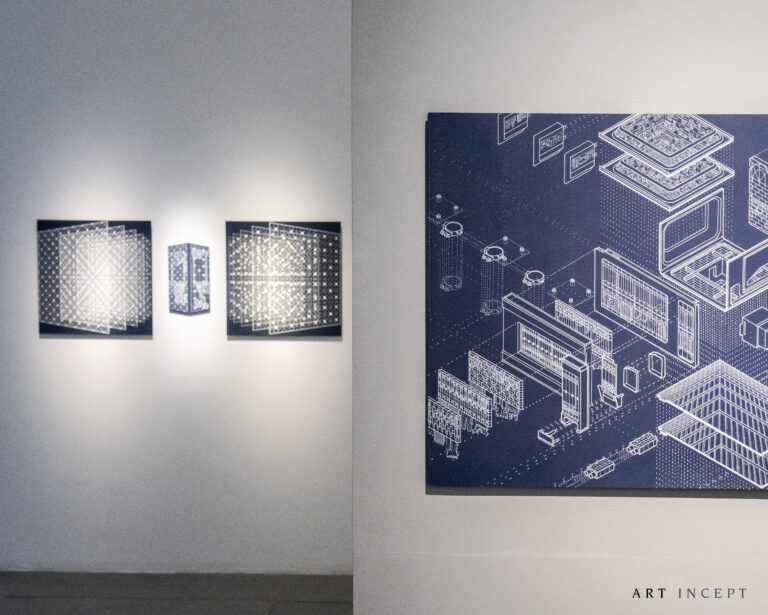
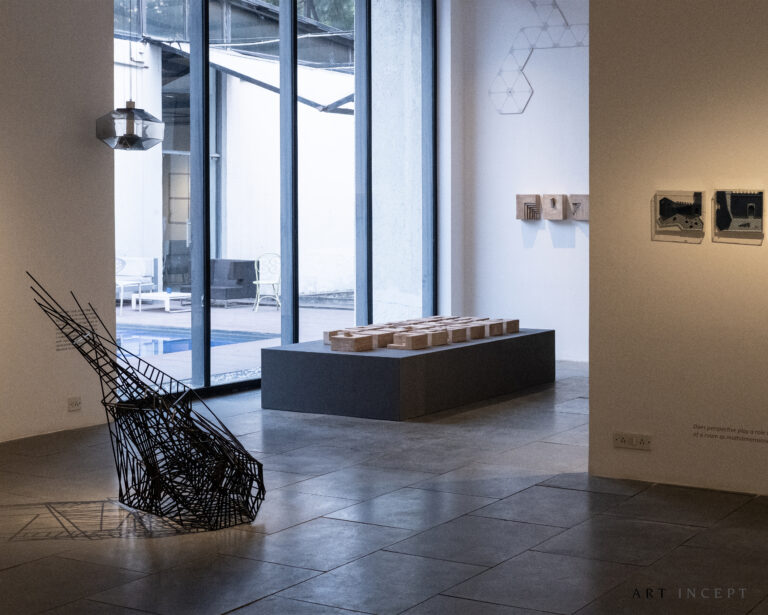


contemporary artists exploring space as a metaphor
Architecture is a practice of space making. It is simply creating inhabitable enclosures, and yet it is layered with multitudes of contexts. Layout and form, material and textures, relation to the location of the build structure, and the very purpose it serves, all contribute to the understanding and perceptions of space. Architecturally, there are elements of science and maths, symbolism, and collective cultures, that influence the articulation of a constructed ecosystem. But extending the
‘spatial’ conversation beyond the strict confines of the discipline, it opens up a whole new world of imagination.
Spaced out conceptually explores the idea of space and associated emotions in distinct ways. Multidisciplinary artists respond to and investigate concepts, express ideas, and depict notions of how and when the association of architectural space becomes a metaphor and when does it take the
real form. Practitioners using a wide variety of media and processes present a cohesive, yet multifaceted works of art.
Space awareness begins earlier than we think. It often grows out of mythic memory, rituals, and sometimes merely with thought. I find myself fortunate to work with investigators who are engaged with these interests. They provoke concepts of space-meaning through depicting its ideas in their
respective creations. It is also my hope that the cross-sectioning of the choice of artists and art works will speak for itself, and become the basis for further enquiry. The works transmit values of social, psychological, and spiritual, which are virtually endless.
What do we lose when we strip space of these meanings?
Abhishek Dodiya uniquely layers his idiom by the use of scrap metal. He is rooted to both, the shipbreaking yard at his home town in Bhavnagar and the family profession of fabricating welded iron furniture. This portrayal of dismantling and reconstruction carry forward the history of the material. Metal sheet that made an erstwhile ship, now makes a house, both as a metaphor and through the act of the artist’s hands. Debasish Mukherjee in contrast investigates the built environment, strongly layered with socio-cultural fabric of the city of Banaras. He is engaged with the ideas of preserving memory through object making. He is himself intrigued with the starkness of the dualities that the ancient city beholds, that of age-old history and the now, of life that is constantly juxtaposed with death. His works puts in focus singular architectural elements that carry his personal nostalgia.
The play of light, its simplicity and drama are captured in the graphite renditions of Dilip Chobisa. He explores the mystery to reveal the hidden forms, distinguishing it from what is revealed. He consciously disregards the laws of architecture, yet creates an order of intrigue and curiosity. His drawings are defined by light or the lack of it, suggesting dark silences and pronounced emptiness, challenging the limits of perception and makes visible the possibility of space beyond the definition. On the other hand, M. Pravat has been exploring expressions of a city under construction. His interest in this subject comes particularly from the discord between the city as it appears in masterplans, in popular desires, and in contrast of the actual physical experience of it. He expresses
this dissonance we experience in our everyday lives with brutal intensity, sometimes from the intimacy of a home or at an urban scale of the city itself. Textures and material processes are significant in the art of the Pravat. Through the systematic process of undoing and destruction, he
asks how could these forces be measured?
Martand Khosla explores urban continuity and transformation, as both complement and counter to his experience building in contemporary India. He initially pursued art to explore how construction- fuelled employment, shapes identities and nostalgia. Situated as both participant and observer, he employed tools of the State, such as the ubiquitous rubber stamp, to render its imprint on lives within traditional definitions of power and dispossession. His works traverse the lines between sculpture and object, movement and remnant, material and memory. Inspired by his studies of repetition and the human churning of industrialization, he replicates the micro-processes of macro- construction. And simultaneously, he moves from the lens of authoritarian power to its dispersion, exploring the transformations that lay in between. Likewise, Neelesh Yogi uses delicately formed paper sculptures. The objects created in his works are mostly man-made, but often juxtapose the traditional with contemporary. The current series references the architecture of Bengal. Neelesh has explored the traditional buildings in the city, in particular the home of Rabindranath Tagore. His works create a nostalgia by weaving architectural elements from the heritage sites of the city. The saturated blue tones achieved through cyanotype printing evokes a sense of darkness opening doors for interpretation of a silhouette or as a metaphor for degeneration of our cultural legacy.
Neyeti Chada’s works are recordings of the basic formalism in the urban environment. Her practice extends to various mediums and formats, from printmaking, sculpture, and photography to site- specific installations. The recent set of works is a series of collages featuring Balsa wood and Isograph pen on Paper, looking into the metabolic character of a city. Like a breathing organism, a city that is endlessly morphing and evolving. The works incorporate original photographs layered with drawings and materials such as balsa wood, ink, and Gouache. For Pratap Moray art is a means to document and contemplate the changing infrastructure and landscape of the city. He uses a range of mediums including archival ink, engravings, and digital photography to create his artworks. His preoccupation with Mumbai’s architecture began during his childhood when his family relocated to
the city. From congested lanes and tilted old buildings to the gentrification and displacement experienced by the city’s dwellers, the subjects of his works are mostly inspired by his own experiences with the unique urban make-up of the city.
Must space be an enclosed, three dimensional one? Could a unidimensional wall denote space?
Can space even be metaphysical? Can it be boundary less?Do the elements contained within an architectural creation evoke associations of it?
How would one react to the play of light within a given physical construct of space?
Does perspective play a role to view image of a room as multidimensional?
Can memories of a lived experience create déjà vu and perception of the very space while being physically absent from it? Does scale hold significance in the context – astronomical, earthly landscapes, a building, or anthill?
…let us find out through the presentations at ‘spaced out…’
– Rahul Kumar
